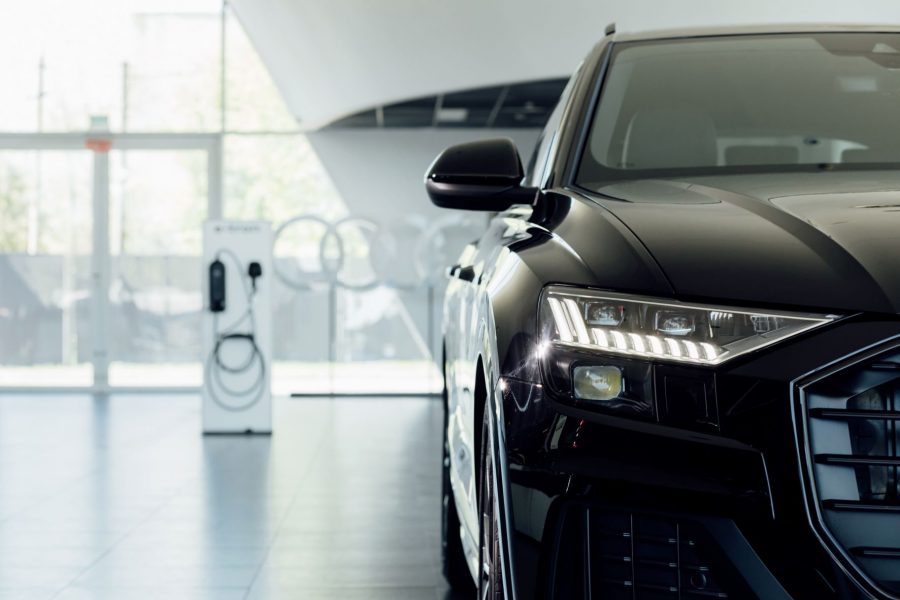
Discussion Highlights: Chair and Students’ Roundtable #3
4 March 2022
For a European recycling industry: taking the opportunity of EVs batteries
5 April 2022By Johan Bracht
Analysts frequently mention Electric Vehicles (EV) cost as one of the main barriers to large-scale EV uptake. Currently, EVs are around 5.000-10.000 USD more expensive than their petrol equivalent. The higher EV sticker price is mainly a result of the battery cost, which currently represents around 25-30% of the total EV cost ($132/kWh in 2021). Yet, despite constant media coverage of declining battery costs over the past years, the battery price is actually projected to increase in 2022 (to $135/kWh), due to a price surge in critical minerals, according to Bloomberg. In fact, the average EV battery size has also increased by 64% between 2015 and 2020, which shows that automakers offer increasingly larger EVs, delaying price parity to petrol vehicles even further. Automakers justify this trend by pointing to range anxiety and consumer demand for large vehicles. That is why, in the US, the big EV announcements, by the traditional automakers, are centred around the F-150 Lightning, GMC Hummer EV, and Chevrolet’s Electric Silverado, while mid-sized EVs are pushed down the pipeline. The same goes for the EU, where VW is launching the ID.4/5, BMW the iX and Audi the Q6 e-tron. For illustration, VW entirely skipped exporting its flagship ID.3 hatchback to the U.S. because it was considered too small to be successful in a SUV-driven U.S. market.
However, these large EVs are, by definition, contrary to large-scale EV uptake as low-income households are priced out of the energy transition. Reducing European and American drivers to intrinsically SUV-loving consumers, does not match consumer demand analysis in the realm of EVs. For illustration, in 2021, petrol SUVs accounted for 45% of global car sales. Moreover, 55% of EV models on the market were e-SUVs, up from 45% in 2019, according to the International Energy Agency. One conclusion to be drawn from these figures is that automakers simply respond to consumer demand, while the higher margin on e-SUVs is just a fortunate side-effect. The other, more nuanced analysis, would suggest that consumers are, in fact, not given viable electric alternatives in an affordable price range and, thus, are obliged to opt for e-SUVs, if they can afford them.
To put this into perspective, in the largest European EV market, Germany, the December 2021 EV top 5 was dominated by the full electric Dacia Spring, a low-cost (< $20k) hatchback, the electric Renault Twingo (2k units), and the VW E-UP (> 5k). The E-UP’s resurgence occurred despite closure of its ordering books before the start of last year. As a consequence, pressure from consumers has led VW to re-open the E-UP ordering books in 2022. This led to short-term website overloads and ended with the dealership of E-UP delivery quotas, highlighting to what extend consumers are craving for small, affordable EVs. In the US, despite the $1.9bn vehicle recall by GM and LG Chem, the Chevrolet Bolt EV still managed to secure a top 5 spot in the U.S. EV market with almost 25k units sold in 2021. Unfortunately, as traditional automakers will offer exclusively large EVs in the coming years, they trap consumers in an expensively bloated EV bubble, simply by providing them with a lack of alternatives and creating the self-fulling prophecy that consumers mainly demand large EVs.
The reasons for automakers to neglect this consumer blind spot are twofold. From an economic perspective, large EVs yield higher profit margins, and since profit margins are still slim within e-mobility, automakers have a rationale to focus on these models. From a technical perspective, due to the ongoing chip shortage, automakers prefer to use the scarce chips on high-margin models such as SUV, exacerbating the SUV trend further.
From an environmental perspective, SUVs are not just more expensive and larger vehicles, but the SUV trend has offset any emission reduction efforts from the EV transition at large in recent years as they consume 20% more energy than a medium-sized car. Simply shifting from petrol to electric SUV won’t solve the problem as larger vehicles also require larger batteries (70 kWh for e-SUV against 50 kWh for average EVs). Thus, more critical minerals are mined, shipped, and processed in energy-intensive jurisdictions such as China. These critical minerals include, but are not limited to, lithium, cobalt, nickel, rare earths, and copper, all of which are predominantly processed in China (< 80%).
Meanwhile, the best-selling EV in China was the Wuling Hongguang Mini EV (400k), with a price point below $10.000, which has found many local imitators. Analysing the current and future EV model pipeline shows how western automakers put short-term profit over both climate and consumers, leaving an open flank for Chinese automakers to exploit. The affordable EV segment essentially provides China with the necessary foothold to once established western auto markets, and what might now seem like an unprofitable niche market may soon become the blind spot western automakers wish they addressed before it was too late.
About the Author
Johan Bracht is a graduate student at Sciences Po, Paris where the focus of his studies is on energy markets. Mr. Bracht previously worked as an EU-policy analyst for Hydrogen Europe in Brussels and for BMW in Geneva and Munich, managing electric vehicle markets.
*This Blog Entry was selected for publication under the call with the subject: What future for electric vehicles?


